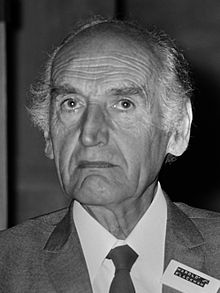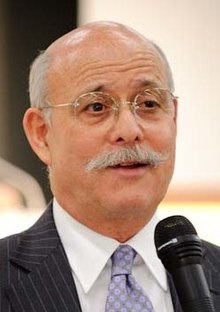_______
On November 21, 2014 I received a letter from Nobel Laureate Harry Kroto and it said:
…Please click on this URL http://vimeo.com/26991975
and you will hear what far smarter people than I have to say on this matter. I agree with them.
Harry Kroto

I have attempted to respond to all of Dr. Kroto’s friends arguments and I have posted my responses one per week for over a year now. Here are some of my earlier posts:
Arif Ahmed, Haroon Ahmed, Jim Al-Khalili, Sir David Attenborough, Mark Balaguer, Horace Barlow, Michael Bate, Sir Patrick Bateson, Simon Blackburn, Colin Blakemore, Ned Block, Pascal Boyer, Patricia Churchland, Aaron Ciechanover, Noam Chomsky, Brian Cox, Partha Dasgupta, Alan Dershowitz, Frank Drake, Hubert Dreyfus, John Dunn, Bart Ehrman, Mark Elvin, Richard Ernst, Stephan Feuchtwang, Robert Foley, David Friend, Riccardo Giacconi, Ivar Giaever , Roy Glauber, Rebecca Goldstein, David J. Gross, Brian Greene, Susan Greenfield, Stephen F Gudeman, Alan Guth, Jonathan Haidt, Theodor W. Hänsch, Brian Harrison, Stephen Hawking, Hermann Hauser, Robert Hinde, Roald Hoffmann, Bruce Hood, Gerard ‘t Hooft, Caroline Humphrey, Nicholas Humphrey, Herbert Huppert, Gareth Stedman Jones, Steve Jones, Shelly Kagan, Michio Kaku, Stuart Kauffman, Masatoshi Koshiba, Lawrence Krauss, Harry Kroto, George Lakoff, Rodolfo Llinas, Elizabeth Loftus, Alan Macfarlane, Dan McKenzie, Mahzarin Banaji, Peter Millican, Marvin Minsky, Leonard Mlodinow, P.Z.Myers, Yujin Nagasawa, Alva Noe, Douglas Osheroff, David Parkin, Jonathan Parry, Roger Penrose, Saul Perlmutter, Herman Philipse, Carolyn Porco, Robert M. Price, VS Ramachandran, Lisa Randall, Lord Martin Rees, Colin Renfrew, Alison Richard, C.J. van Rijsbergen, Oliver Sacks, John Searle, Marcus du Sautoy, Simon Schaffer, J. L. Schellenberg, Lee Silver, Peter Singer, Walter Sinnott-Armstrong, Ronald de Sousa, Victor Stenger, John Sulston, Barry Supple, Leonard Susskind, Raymond Tallis, Max Tegmark, Neil deGrasse Tyson, Martinus J. G. Veltman, Craig Venter, .Alexander Vilenkin, Sir John Walker, James D. Watson, Frank Wilczek, Steven Weinberg, and Lewis Wolpert,
Origin, Evolution, and the Future of Life on Earth
___
Ultimate Reality of Christian de Duve
______
The Origin, Evolution & Future of Life (H1150) – Full Video
____
Christian de Duve
| Christian de Duve | |
|---|---|

de Duve lecturing on the origin of the eukaryotic cell in October 2012
|
|
| Born | Christian René Marie Joseph de Duve 2 October 1917 Thames Ditton, Surrey, Great Britain |
| Died | 4 May 2013 (aged 95) Grez-Doiceau, Belgium |
| Residence | Belgium |
| Citizenship | Belgian |
| Nationality | Belgium |
| Fields | |
| Institutions | |
| Alma mater |
|
| Known for | Cell organelles |
| Notable awards |
|
| Spouse | Janine Herman (m. 1943; d. 2008) |
| Children |
|
Dutch Queen Beatrix meets 5 Nobel Prize winners: Paul Berg, Christian de Duve, Steven Weinberg, Manfred Eigen, Nicolaas Bloembergen (1983)
Christian René Marie Joseph, Viscount de Duve (2 October 1917 – 4 May 2013) was a Nobel Prize-winning Belgian cytologist and biochemist.[2][3] He made serendipitous discoveries of two cell organelles, peroxisome and lysosome, for which he shared the Nobel Prize in Physiology or Medicine in 1974 with Albert Claude and George E. Palade (“for their discoveries concerning the structural and functional organization of the cell”).[4] In addition to peroxisome and lysosome, he invented the scientific names such as autophagy, endocytosis, and exocytosis in a single occasion.[5][6][7][8][9]
A son of Belgian refugees during the First World War, de Duve was born in Thames Ditton, Surrey, Great Britain.[10] His family returned to Belgium in 1920. He was educated by the Jesuits at Onze-Lieve-Vrouwinstituut in Antwerp, and studied medicine at the Catholic University of Leuven. Upon earning his MD in 1941, he joined research in chemistry, working on insulin and its role in diabetes mellitus. His thesis earned him the highest university degree agrégation de l’enseignement supérieur (equivalent to PhD) in 1945. With his work on the purification of penicillin, he obtained an MSc degree in 1946. He went for further training under (later Nobel Prize winners) Hugo Theorell at the Karolinska Institutet in Stockholm, and Carl and Gerti Cori at the Washington University in St. Louis. He joined the faculty of medicine at Leuven in 1947. In 1960 he was invited to the Rockfeller Institute (now Rockefeller University). With mutual arrangement with Leuven, he became professor in both universities from 1962, dividing his time between Leuven and New York. He became emeritus professor of Leuven university in 1985, and of Rockefeller in 1988.
De Duve was decorated with Viscount in 1989 by King Baudouin of Belgium. He was also a recipient of Francqui Prize, Gairdner Foundation International Award, Heineken Prize, and E. B. Wilson Medal. In 1974 he founded the International Institute of Cellular and Molecular Pathology in Brussels, eventually renamed the de Duve Institute in 2005. He was the founding President of the L’Oréal-UNESCO Awards for Women in Science.[11]
He died on 4 May (Saturday) 2013 by self-induced euthanasia in the presence of all of his children.[12]
Early life and education[edit]
De Duve was born of a shopkeeper Alphonse de Duve and wife Madeleine Pungs in the village of Thames Ditton, near London. His parents fled Belgium at the outbreak of the First World War. After the war in 1920, at age three, he and his family returned to Belgium. He was a precocious boy, always the best student (primus perpetuus as he recalled) in school, except for one year when he was pronounced “out of competition” to give chance to other students.[2] He was educated by the Jesuits at Onze-Lieve-Vrouwinstituut in Antwerp, before studying at the Catholic University of Leuven in 1934.[13] He wanted to specialize in endocrinology and joined the laboratory of the Belgian physiologist Joseph P. Bouckaert. During his last year at medical school in 1940, the Germans invaded Belgium. He was drafted to the Belgian army, and posted in southern France as medical officer. There, he was almost immediately taken as prisoner of war by Germans. But fortunate of his ability to speak fluent German and Flemish, he outwitted his captors and escaped back to Belgium. (The adventure he later described as “more comical than heroic”.)[14] He immediately continued his medical course, and obtained his MD in 1941 from Leuven. His primary research was on insulin and its role in glucose metabolism. He made an initial discovery that a commercial preparation of insulin was contaminated with another pancreatic hormone, the insulin antagonist glucagon. However, laboratory supplies at Leuven were in shortage, he therefore enrolled in a programme to earn a degree in chemistry at the Cancer Institute. His research on insulin was summed up in a 400-page book titled Glucose, Insuline et Diabète (Glucose, Insulin and Diabetes) published in 1945, simultaneously in Brussels and Paris. The book was condensed into a technical dissertation which earned him the most advanced degree at the university level agrégation de l’enseignement supérieur (an equivalent of a doctorate – he called it “a sort of glorified Ph.D.”) in 1945.[14] His thesis was followed by a number of scientific publications.[15] He subsequently obtained MSc in chemistry in 1946, for which he worked on the purification of penicillin.[16][17] To enhance his skill in biochemistry, he trained in the laboratory of Hugo Theorell (who later won The Nobel Prize in Physiology or Medicine in 1955) at the Nobel Medical Institute in Stockholm for 18 months during 1946-1947. In 1947 he received a financial assistance as Rockefeller Foundation fellow and worked for six months with Carl and Gerti Cori‘s at Washington University in St. Louis (the husband and wife were joint winners of The Nobel Prize in Physiology or Medicine in 1947).[18]
Career and research[edit]
In March 1947 de Duve joined the faculty of the medical school of the Catholic University of Leuven teaching physiological chemistry. In 1951 he became full professor. In 1960 Detlev Bronk, the then president of the Rockfeller Institute (what is now Rockefeller University) of New York City, met him at Brussels and offered him professorship and a laboratory. The rector of Leuven, afraid of entirely losing de Duve, made a compromise over dinner that de Duve would still be under part-time appointment with a relief from teaching and conducting examinations. The rector and Bronk made an agreement which would intilally last for five years. The official implementation was in 1962, and de Duve simultaneously headed the research laboratories at Leuven and at Rockefeller University, dividing his time between New York and Leuven.[19] In 1969 the Leuven university was split into two separate universities. He joined the French-speaking side of Université catholique de Louvain. He took emeritus status at Université catholique de Louvain in 1985 and at Rockefeller in 1988, though he continued to conduct research. Among other subjects, he studied the distribution of enzymes in rat liver cells using rate-zonal centrifugation. His work on cell fractionation provided an insight into the function of cell structures. He specialized in subcellular biochemistry and cell biology and discovered new cell organelles.[20][21][22][23][24][25][26][27][28][29][30][31][32][33]
Personal life[edit]
De Duve was brought up as a Roman Catholic. In his later years he tended towards agnosticism, if not strict atheism.[67][68] However, de Duve also thought that “Most biologists, today, tend to see life and mind as cosmic imperatives, written into the very fabric of the universe, rather than as extraordinarily improbable products of chance.[69] “It would be an exaggeration to say I’m not afraid of death,” he explicitly said to a Belgian newspaper Le Soir just a month before his death, “but I’m not afraid of what comes after, because I’m not a believer.”[70][71] He strongly supported biological evolution as a fact, and dismissive of creation science and intelligent design, as explicitly stated in his last book, Genetics of Original Sin: The Impact of Natural Selection on the Future of Humanity. He was among the seventy-eight Nobel laureates in science to endorse the effort to repeal Louisiana Science Education Act of 2008.[72]
De Duve married Janine Herman on 30 September 1943. Together they had had two sons, Thierry and Alain, and two daughters, Anne and Françoise. Janine died in 2008, aged 86.[16]
Death[edit]
De Duve died on 4 May 2013, at his home in Nethen, Belgium, at the age of 95. He decided to end his life by legal euthanasia, performed by two doctors before his four children. He had been long suffering from cancer and atrial fibrillation, and his health problems were exacerbated by a recent fall in his home. He is survived by two sons and two daughters; two brothers, Pierre and Daniel; seven grandchildren; and two great-grandchildren.[73][74][75]
De Duve was cremated as he had willed, and his ashes were distributed among family members and friends.[3]
Awards and honours[edit]
De Duve won the Francqui Prize for Biological and Medical Sciences in 1960, and the Nobel Prize for Physiology or Medicine in 1974. King Baudouin of Belgium honoured him to Viscount in 1989.[16] He was the recipient of the Canada Gairdner International Award in 1967, and the Dr H.P. Heineken Prize for Biochemistry and Biophysics in 1973 from the Royal Netherlands Academy of Arts and Sciences. He was elected a foreign associate of the US National Academy of Sciences in 1975. He won the Harden Medal of the Biochemical Society of Great Britain in 1978; the Theobald Smith Award from the Albany Medical College in 1981; the Jimenez Diaz Award in 1985; the Innovators of Biochemistry Award from Medical College of Virginia in 1986; and the E. B. Wilson Medal from the American Society for Cell Biology in 1989.[76] He was also a member of the Royal Academies of Medicine and the Royal Academy of Sciences, Arts, and of Literature of Belgium; the Pontifical Academy of Sciences of the Vatican; the American Academy of Arts and Sciences; the French National Academy of Medicine; the Academy of Sciences of Paris; the Deutsche Akademie der Naturforscher Leopoldina; the American Philosophical Society. He was elected a Foreign Member of the Royal Society (ForMemRS) in 1988.[1] In addition, he received honorary doctorates from eighteen universities around the world.[18]
Legacy[edit]
De Duve founded a multidisciplinary biomedical research institute at Université catholique de Louvain in 1974, called the International Institute of Cellular and Molecular Pathology (ICP), and later renamed “de Duve Institute.”[77] He remained its president until 1991. On his 80th birthday in 1997 it was renamed the Christian de Duve Institute of Cellular Pathology. In 2005 it was further contracted to simply the de Duve Institute.[78]
De Duve was one of the founding members of the Belgian Society of Biochemistry and Molecular Biology, established on 15 September 1951.[79]
De Duve is remembered as an inventor of important scientific terminology. He coined the word lysosome in 1955, peroxisome in 1966, and autophagy, endocytosis, and exocytosis in one instance at the Ciba Foundation Symposium on Lysosomes held in London during 12–14 February 1963, while he, “was in a word-coining mood.”[21][80]
De Duve’s life, including his work resulting in a Nobel Prize, and his passion for biology is the subject of a documentary film Portrait of a Nobel Prize: Christian de Duve (Portrait de Nobel : Christian de Duve), directed by Aurélie Wijnants. It was first aired on Eurochannel in 2012.[81]
- 1917 births
- 2013 deaths
- Belgian agnostics
- Belgian atheists
- Belgian academics
- Belgian scientists
- Belgian Nobel laureates
- Catholic University of Leuven alumni
- Nobel laureates in Physiology or Medicine
- Members of the Pontifical Academy of Sciences
- Foreign Members of the Royal Society
- Catholic University of Leuven alumni (pre-1968)
- Members of the French Academy of Sciences
- Members of the United States National Academy of Sciences
- People from Thames Ditton
- Rockefeller University faculty
- Winners of the Heineken Prize
- Deaths by euthanasia
- Former Roman Catholics
__
In the third video below in the 144th clip in this series are his words and my response is below them.
50 Renowned Academics Speaking About God (Part 1)
Another 50 Renowned Academics Speaking About God (Part 2
A Further 50 Renowned Academics Speaking About God (Part 3)
____
Quote from Christian de Duve in the film series “A Further 50 Renowned Academics Speaking About God (Part 3)” and my response below ( Original interview was in 2005 and was conducted by Harry Kroto at the annual Lindau meeting):
Of course, I fully agree with you and I think with most of my fellow scientists. There is a complete disassociation between the dogma and belief and the way we scientists approach the search for truth. And so obviously as a scientist and being brought up as a Catholic I could not safely continue accepting the teaching of the church.
Let me make two observations here.
FIRST, I think a person needs to take time examine the historical accuracy of the Bible. If the Bible is true then history and historical records should have something to say about that.
Here are some of the posts I have done in the past on the subject and if you like you could just google these subjects: 1. The Babylonian Chronicle, of Nebuchadnezzars Siege of Jerusalem, 2. Hezekiah’s Siloam Tunnel Inscription. 3. Taylor Prism (Sennacherib Hexagonal Prism), 4. Biblical Cities Attested Archaeologically. 5. The Discovery of the Hittites, 6.Shishak Smiting His Captives, 7. Moabite Stone, 8. Black Obelisk of Shalmaneser III, 9A Verification of places in Gospel of John and Book of Acts., 9B Discovery of Ebla Tablets. 10. Cyrus Cylinder, 11. Puru “The lot of Yahali” 9th Century B.C.E., 12. The Uzziah Tablet Inscription, 13. The Pilate Inscription, 14. Caiaphas Ossuary, 14 B Pontius Pilate Part 2, 14c. Three greatest American Archaeologists moved to accept Bible’s accuracy through archaeology.,
SECOND, if there is no lasting meaning to life then CHANCE RULES. Let me discuss that a little more below.
Christian de Duve was very critical of Creationism!!!
Chrisian de Duve was a very sharp critic of creationism even though he grew up in a family that who were committed Catholics. In the Wikipedia article cited above we read these words:
“Most biologists, today, tend to see life and mind as cosmic imperatives, written into the very fabric of the universe, rather than as extraordinarily improbable products of chance.[69] “It would be an exaggeration to say I’m not afraid of death,” he explicitly said to a Belgian newspaper Le Soir just a month before his death, “but I’m not afraid of what comes after, because I’m not a believer.”[70][71] He strongly supported biological evolution as a fact, and dismissive of creation science and intelligent design, as explicitly stated in his last book, Genetics of Original Sin: The Impact of Natural Selection on the Future of Humanity. He was among the seventy-eight Nobel laureates in science to endorse the effort to repeal Louisiana Science Education Act of 2008.[72]
I do want to salute him for at least taking a careful look and seeing that there were clearly two different paths we can take philosophically. We can either realize that the answer to find meaning in life is found in putting your faith and trust in Jesus Christ and the Bible is true from cover to cover and can be trusted. Or we have to say that it is all by CHANCE. Below are the words of Christian de Duve:
“The answer of modern molecular biology to this much-debated question is categorical: chance, and chance alone, did it all, from primeval soup to man, with only natural selection to sift its effects. This affirmation now rests on overwhelming factual evidence.”
A Guided Tour Of The Living Cell, Volume Two, Page 357
Scientific American Library, 1984
Portion of my 5-15-94 letter to Christian de Duve
On May 15, 1994 on the 10th anniversary of the passing of Francis Schaeffer I attempted to send a letter to almost every living Nobel Prize winner and I believe Dr.Christian de Duve was probably among that group and here is a portion of that letter below:
I have enclosed a cassette tape by Adrian Rogers and it includes a story about Charles Darwin‘s journey from the position of theistic evolution to agnosticism. Here are the four bridges that Adrian Rogers says evolutionists can’t cross in the CD “Four Bridges that the Evolutionist Cannot Cross.” 1. The Origin of Life and the law of biogenesis. 2. The Fixity of the Species. 3.The Second Law of Thermodynamics. 4. The Non-Physical Properties Found in Creation.

Adrian Rogers is pictured below and Francis Schaeffer above.

In the first 3 minutes of the cassette tape is the hit song “Dust in the Wind.” Below I have given you some key points Francis Schaeffer makes about the experiment that Solomon undertakes in the book of Ecclesiastes to find satisfaction by looking into learning (1:16-18), laughter, ladies, luxuries, and liquor (2:1-3, 8, 10, 11), and labor (2:4-6, 18-20).
Schaeffer noted that Solomon took a look at the meaning of life on the basis of human life standing alone between birth and death “under the sun.” This phrase UNDER THE SUN appears over and over in Ecclesiastes. The Christian Scholar Ravi Zacharias noted, “The key to understanding the Book of Ecclesiastes is the term UNDER THE SUN — What that literally means is you lock God out of a closed system and you are left with only this world of Time plus Chance plus matter.”
Here the first 7 verses of Ecclesiastes followed by Schaeffer’s commentary on it:
The words of the Preacher, the son of David, king in Jerusalem. Vanity of vanities, says the Preacher, vanity of vanities! All is vanity. What does man gain by all the toil at which he toils under the sun? A generation goes, and a generation comes, but the earth remains forever. The sun rises, and the sun goes down, and hastens to the place where it rises. The wind blows to the south and goes around to the north; around and around goes the wind, and on its circuits the wind returns. All streams run to the sea, but the sea is not full; to the place where the streams flow, there they flow again.
Solomon is showing a high degree of comprehension of evaporation and the results of it. Seeing also in reality nothing changes. There is change but always in a set framework and that is cycle. You can relate this to the concepts of modern man. Ecclesiastes is the only pessimistic book in the Bible and that is because of the place where Solomon limits himself. He limits himself to the question of human life, life under the sun between birth and death and the answers this would give.
Solomon doesn’t place man outside of the cycle. Man doesn’t escape the cycle. Man is in the cycle. Birth and death and youth and old age.
There is no doubt in my mind that Solomon had the same experience in his life that I had as a younger man (at the age of 18 in 1930). I remember standing by the sea and the moon arose and it was copper and beauty. Then the moon did not look like a flat dish but a globe or a sphere since it was close to the horizon. One could feel the global shape of the earth too. Then it occurred to me that I could contemplate the interplay of the spheres and I was exalted because I thought I can look upon them with all their power, might, and size, but they could contempt nothing. Then came upon me a horror of great darkness because it suddenly occurred to me that although I could contemplate them and they could contemplate nothing yet they would continue to turn in ongoing cycles when I saw no more forever and I was crushed.
Watching the film HOW SHOULD WE THEN LIVE? in 1979 impacted my life greatly

Francis Schaeffer in the film WHATEVER HAPPENED TO THE HUMAN RACE?

Francis and Edith Schaeffer

_______
Let me show you some inescapable conclusions if you choose to live without God in the picture. Schaeffer noted that Solomon came to these same conclusions when he looked at life “under the sun.”
- Death is the great equalizer (Eccl 3:20, “All go to the same place; all come from dust, and to dust all return.”)
- Chance and time have determined the past, and they will determine the future. (Ecclesiastes 9:11-13 “I have seen something else under the sun: The race is not to the swift
or the battle to the strong, nor does food come to the wise or wealth to the brilliant or favor to the learned; but time and chance happen to them all. Moreover, no one knows when their hour will come: As fish are caught in a cruel net, or birds are taken in a snare, so people are trapped by evil times that fall unexpectedly upon them.”) - Power reigns in this life, and the scales are not balanced(Eccl 4:1; “Again I looked and saw all the oppression that was taking place under the sun: I saw the tears of the oppressed—
and they have no comforter; power was on the side of their oppressors— and they have no comforter.” 7:15 “In this meaningless life of mine I have seen both of these: the righteous perishing in their righteousness, and the wicked living long in their wickedness. ). - Nothing in life gives true satisfaction without God including knowledge (1:16-18), ladies and liquor (2:1-3, 8, 10, 11), and great building projects (2:4-6, 18-20).
- There is no ultimate lasting meaning in life. (1:2)
By the way, the final chapter of Ecclesiastes finishes with Solomon emphasizing that serving God is the only proper response of man. Solomon looks above the sun and brings God back into the picture in the final chapter of the book in Ecclesiastes 12:13-14, “ Now all has been heard; here is the conclusion of the matter: Fear God and keep his commandments, for this is the whole duty of man. For God will bring every deed into judgment, including every hidden thing, whether it is good or evil.”
The answer to find meaning in life is found in putting your faith and trust in Jesus Christ. The Bible is true from cover to cover and can be trusted. In 1978 I heard the song “Dust in the Wind” by Kansas when it rose to #6 on the charts. That song told me that Kerry Livgren the writer of that song and a member of Kansas had come to the same conclusion that Solomon had and that “all was meaningless UNDER THE SUN,” and looking ABOVE THE SUN was the only option. I remember mentioning to my friends at church that we may soon see some members of Kansas become Christians because their search for the meaning of life had obviously come up empty even though they had risen from being an unknown band to the top of the music business and had all the wealth and fame that came with that.
Livgren wrote, “All we do, crumbles to the ground though we refuse to see, Dust in the Wind, All we are is dust in the wind, Don’t hang on, Nothing lasts forever but the Earth and Sky, It slips away, And all your money won’t another minute buy.”
Both Kerry Livgren and Dave Hope of Kansas became Christians eventually. Kerry Livgren first tried Eastern Religions and Dave Hope had to come out of a heavy drug addiction. I was shocked and elated to see their personal testimony on The 700 Club in 1981. Livgren lives in Topeka, Kansas today where he teaches “Diggers,” a Sunday school class at Topeka Bible Church. Hope is the head of Worship, Evangelism and Outreach at Immanuel Anglican Church in Destin, Florida.
Related posts:
FRANCIS SCHAEFFER ANALYZES ART AND CULTURE Part 52 THE BEATLES (Part D, There is evidence that the Beatles may have been exposed to Francis Schaeffer!!!) (Feature on artist Anna Margaret Rose Freeman )
______________ George Harrison Swears & Insults Paul and Yoko Lucy in the Sky with Diamonds- The Beatles The Beatles: I have dedicated several posts to this series on the Beatles and I don’t know when this series will end because Francis Schaeffer spent a lot of time listening to the Beatles and talking […]
FRANCIS SCHAEFFER ANALYZES ART AND CULTURE Part 51 THE BEATLES (Part C, List of those on cover of Stg.Pepper’s ) (Feature on artist Raqib Shaw )
The Beatles in a press conference after their Return from the USA Uploaded on Nov 29, 2010 The Beatles in a press conference after their Return from the USA. The Beatles: I have dedicated several posts to this series on the Beatles and I don’t know when this series will end because Francis […]
FRANCIS SCHAEFFER ANALYZES ART AND CULTURE Part 50 THE BEATLES (Part B, The Psychedelic Music of the Beatles) (Feature on artist Peter Blake )
__________________ Beatles 1966 Last interview I have dedicated several posts to this series on the Beatles and I don’t know when this series will end because Francis Schaeffer spent a lot of time listening to the Beatles and talking and writing about them and their impact on the culture of the 1960’s. In this […]
FRANCIS SCHAEFFER ANALYZES ART AND CULTURE Part 49 THE BEATLES (Part A, The Meaning of Stg. Pepper’s Cover) (Feature on artist Mika Tajima)
_______________ The Beatles documentary || A Long and Winding Road || Episode 5 (This video discusses Stg. Pepper’s creation I have dedicated several posts to this series on the Beatles and I don’t know when this series will end because Francis Schaeffer spent a lot of time listening to the Beatles and talking and writing about […]
FRANCIS SCHAEFFER ANALYZES ART AND CULTURE PART 48 “BLOW UP” by Michelangelo Antonioni makes Philosophic Statement (Feature on artist Nancy Holt)
_______________ Francis Schaeffer pictured below: _____________________ I have included the 27 minute episode THE AGE OF NONREASON by Francis Schaeffer. In that video Schaeffer noted, ” Sergeant Pepper’s Lonely Hearts Club Band…for a time it became the rallying cry for young people throughout the world. It expressed the essence of their lives, thoughts and their feelings.” How Should […]
FRANCIS SCHAEFFER ANALYZES ART AND CULTURE Part 47 Woody Allen and Professor Levy and the death of “Optimistic Humanism” from the movie CRIMES AND MISDEMEANORS Plus Charles Darwin’s comments too!!! (Feature on artist Rodney Graham)
Crimes and Misdemeanors: A Discussion: Part 1 ___________________________________ Today I will answer the simple question: IS IT POSSIBLE TO BE AN OPTIMISTIC SECULAR HUMANIST THAT DOES NOT BELIEVE IN GOD OR AN AFTERLIFE? This question has been around for a long time and you can go back to the 19th century and read this same […]
FRANCIS SCHAEFFER ANALYZES ART AND CULTURE PART 46 Friedrich Nietzsche (Featured artist is Thomas Schütte)
____________________________________ Francis Schaeffer pictured below: __________ Francis Schaeffer has written extensively on art and culture spanning the last 2000years and here are some posts I have done on this subject before : Francis Schaeffer’s “How should we then live?” Video and outline of episode 10 “Final Choices” , episode 9 “The Age of Personal Peace and Affluence”, episode 8 […]
FRANCIS SCHAEFFER ANALYZES ART AND CULTURE Part 45 Woody Allen “Reason is Dead” (Feature on artists Allora & Calzadilla )
Love and Death [Woody Allen] – What if there is no God? [PL] ___________ _______________ How Should We then Live Episode 7 small (Age of Nonreason) #02 How Should We Then Live? (Promo Clip) Dr. Francis Schaeffer 10 Worldview and Truth Two Minute Warning: How Then Should We Live?: Francis Schaeffer at 100 Francis Schaeffer […]
FRANCIS SCHAEFFER ANALYZES ART AND CULTURE Part 44 The Book of Genesis (Featured artist is Trey McCarley )
___________________________________ Francis Schaeffer pictured below: ____________________________ Francis Schaeffer “BASIS FOR HUMAN DIGNITY” Whatever…HTTHR Dr. Francis schaeffer – The flow of Materialism(from Part 4 of Whatever happened to human race?) Dr. Francis Schaeffer – The Biblical flow of Truth & History (intro) Francis Schaeffer – The Biblical Flow of History & Truth (1) Dr. Francis Schaeffer […]
__
_____
















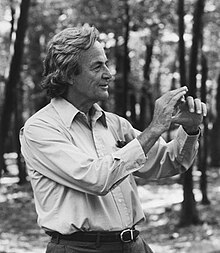



























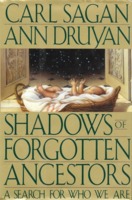

















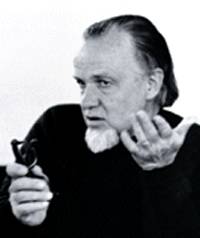

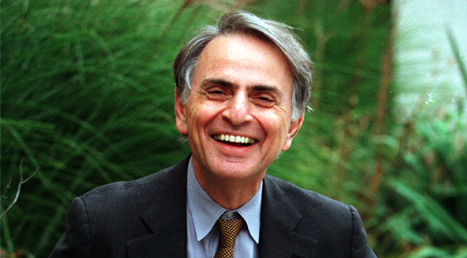

























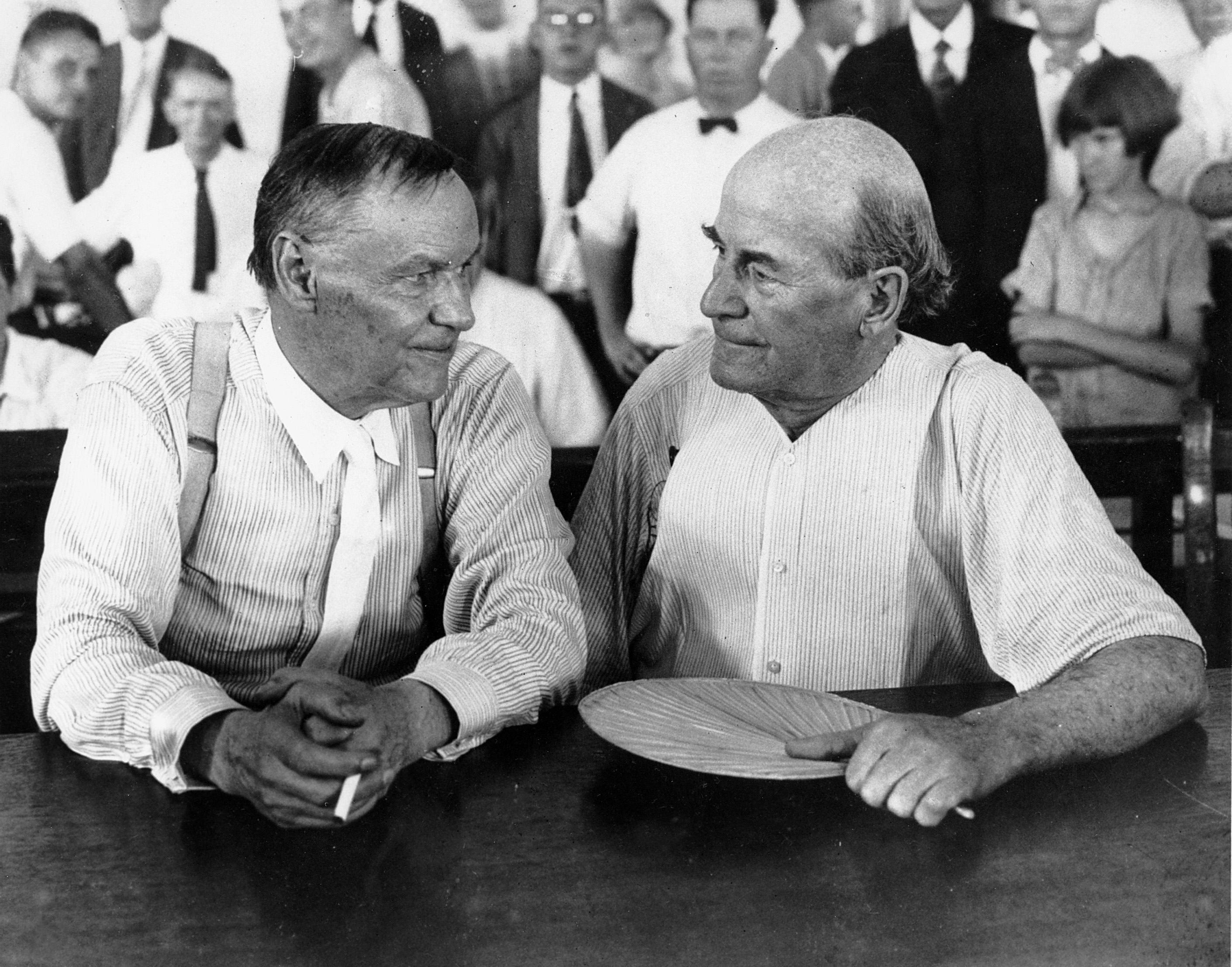





































:max_bytes(150000):strip_icc()/King-Solomon-GettyImages-537859698-57cd84f13df78c71b62edb3b.jpg)


